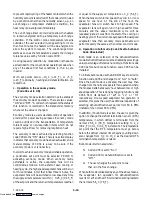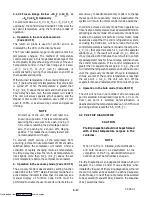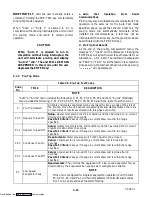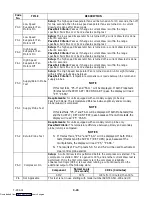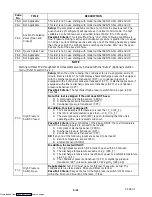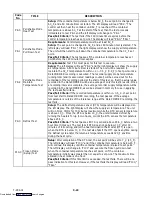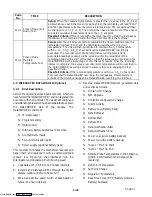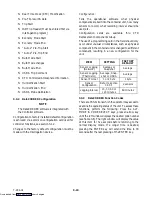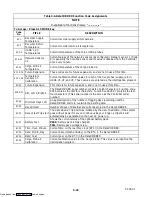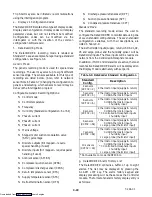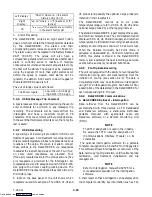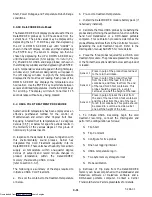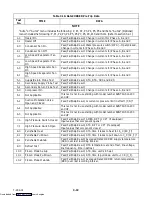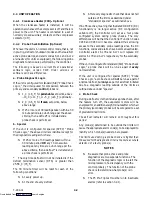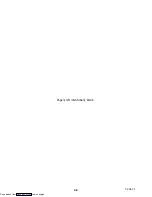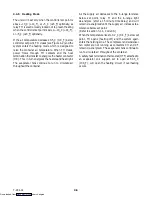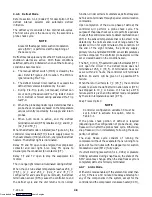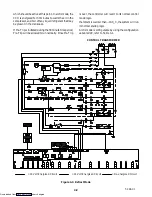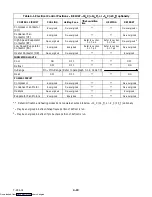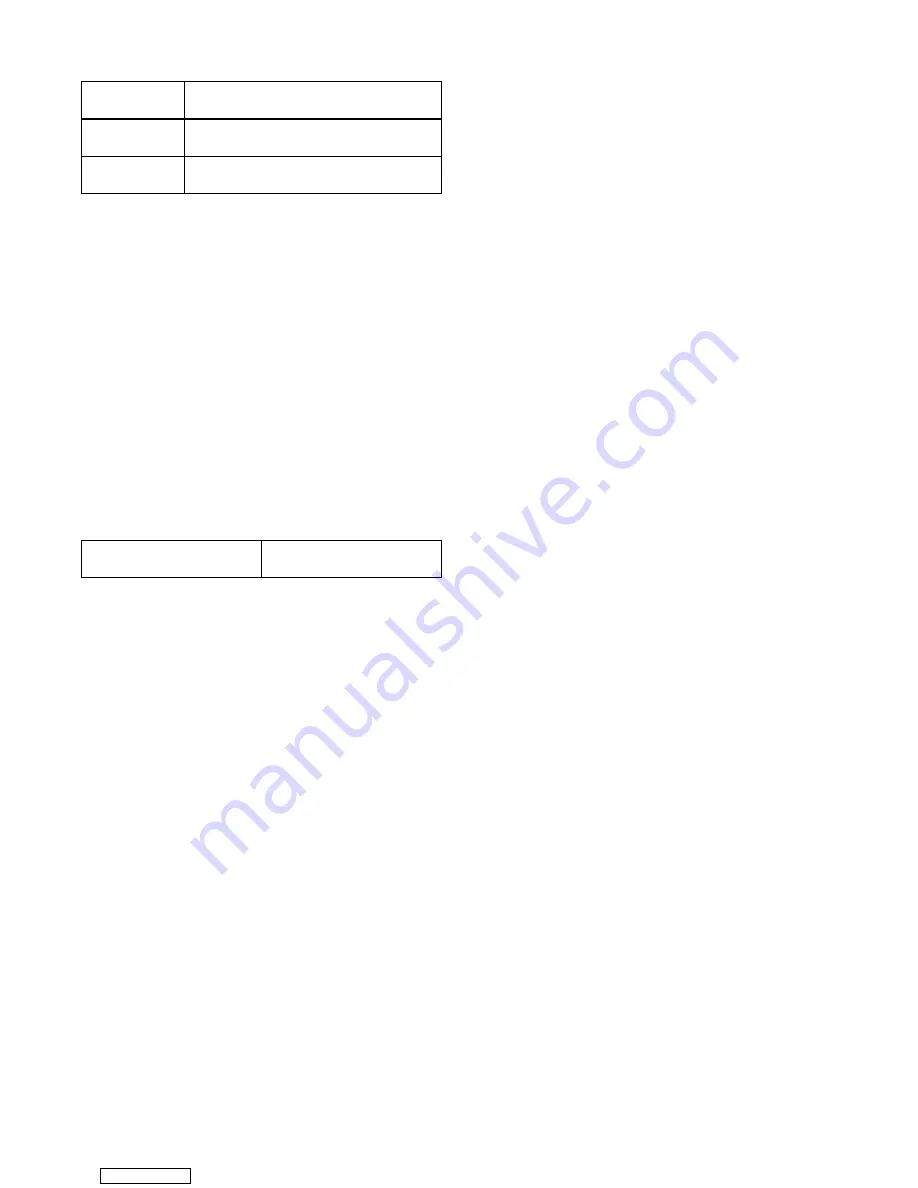
3-30
T-294-01
Left Display:
“dALnn” where nn = the alarm
history entry 01-08
Right
Display:
“xA nn” where x = “I” (inactive) or “A”
(active)
Or:
“
-- -- -- -- --
” if no alarms are currently
in the alarm history list
h. Alarm Processing
The DataCORDER contains an eight alarm history
queue which will contain the first eight alarms detected
by the DataCORDER. The alarms and their
corresponding alarm codes are specified in Table 3-7.
The alarm queue will be located in the Battery Backed
RAM (BRAM). The queue will also have a
corresponding status which will indicate whether each
alarm is currently active or inactive. If multiple
consecutive occurrences of an alarm are generated, only
the first will be stored. The queue may be cleared by
using the keypad. (If more than eight alarms occur
before the queue is cleared, later alarms will be
ignored.) In addition, AL91 alarm code will appear if
the DataCORDER queue is full.
The out of range value is as follows:
Thermistor Inputs:
Low limit = --50.0 degC
High limit = 70.0 degC
3.3.6
USDA/ Message Trip Comment
A special case event is supported for allowing the user to
enter comments for a (USDA or any message) trip
recording. The comments will be received from the
interrogator and have a maximum length of 78
characters. Only one comment will be recorded per day.
In the event that multiple comments occur, then only the
last is saved.
3.3.7
USDA Recording
A special type of recording is provided for USDA cold
treatment purposes. Cold treatment recording requires
three remote temperature probes to be placed at various
locations of the cargo. Provision is made to connect
these probes to the DataCORDER via receptacles
located at the rear left-hand side of the unit. Four (five,
on some units) receptacles are provided. Four
(three-pin) receptacles are for the probes and one (five
pin) receptacle is provided for the Interrogator. All
receptacles are sized to accept a Deutsch HD16-5-16S
size plug with a tricam coupling locking device. The
DataCORDER inputs are designed to accept a two wire
thermistor probe.
A label on the back panel of the unit shows which
receptacle is used for each probe. The USDA #1, #2 and
#3 probes (and possibly the optional Cargo probe) are
installed in their receptacles.
The DataCORDER records up to six probe
temperatures (supply, return, USDA #1, #2, #3 and an
optional cargo probe #4), at the logging interval.
The standard DataCORDER report displays the supply
and return air temperatures. The cold treatment report
displays USDA #1, #2, #3 and the supply and return air
temperatures. Cold treatment recording is backed up by
a battery so recording can continue if AC power is lost.
When the Relative Humidity Set Point mode is
activated or de-activated (ie., Controller function code
Cd33), this status is stored in the DataCORDER
memory and reported at the next recording, as are like
events such as economy mode and bulb mode.
3.3.8
Pre-Trip Data Recording
The unit is equipped with the ability to record pass/fail
information along with unit data resulting from the
initiation of pre-trip (see section 3.2.2). The data is
time-stamped and may be extracted via interrogation
using CTD’s interrogation program. See Table 3-10 for
a description of the data stored in the DataCORDER for
each corresponding Pre-Trip test.
3.3.9
DataCORDER Communications
a. DataCORDER Retrieval -- Interrogation
Data retrieval from the DataCORDER can be
accomplished with three devices: a CTD DataReader
and DataView software, a stand-alone DOS-base
portable computer with appropriate cable and
DataView software, or a Remote Monitoring Unit
(RMU).
NOTE
The RMU designation is used in the industry.
Be aware that CTD uses the designation CI
(Communications Interface Module) on its
schematics.
The optional interrogation software for a portable
computer is supplied on a 3.5 and 5.25 inch floppy disk.
This software allows interrogation, screen view of the
data, hard copy report generation, cold treatment probe
calibration, cold treatment initialization and file
management.
NOTE
Refer to Interrogation manual 62-02575 for a
more detailed explanation of the interrogation
software.
A short report on that interrogation can be displayed on
the computer to identify key information such as Trip
Downloaded from

